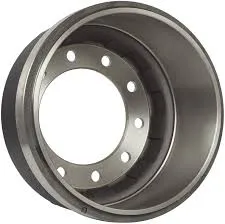
-
 Afrikaans
Afrikaans -
 Albanian
Albanian -
 Amharic
Amharic -
 Arabic
Arabic -
 Armenian
Armenian -
 Azerbaijani
Azerbaijani -
 Basque
Basque -
 Belarusian
Belarusian -
 Bengali
Bengali -
 Bosnian
Bosnian -
 Bulgarian
Bulgarian -
 Catalan
Catalan -
 Cebuano
Cebuano -
 Corsican
Corsican -
 Croatian
Croatian -
 Czech
Czech -
 Danish
Danish -
 Dutch
Dutch -
 English
English -
 Esperanto
Esperanto -
 Estonian
Estonian -
 Finnish
Finnish -
 French
French -
 Frisian
Frisian -
 Galician
Galician -
 Georgian
Georgian -
 German
German -
 Greek
Greek -
 Gujarati
Gujarati -
 Haitian Creole
Haitian Creole -
 hausa
hausa -
 hawaiian
hawaiian -
 Hebrew
Hebrew -
 Hindi
Hindi -
 Miao
Miao -
 Hungarian
Hungarian -
 Icelandic
Icelandic -
 igbo
igbo -
 Indonesian
Indonesian -
 irish
irish -
 Italian
Italian -
 Japanese
Japanese -
 Javanese
Javanese -
 Kannada
Kannada -
 kazakh
kazakh -
 Khmer
Khmer -
 Rwandese
Rwandese -
 Korean
Korean -
 Kurdish
Kurdish -
 Kyrgyz
Kyrgyz -
 Lao
Lao -
 Latin
Latin -
 Latvian
Latvian -
 Lithuanian
Lithuanian -
 Luxembourgish
Luxembourgish -
 Macedonian
Macedonian -
 Malgashi
Malgashi -
 Malay
Malay -
 Malayalam
Malayalam -
 Maltese
Maltese -
 Maori
Maori -
 Marathi
Marathi -
 Mongolian
Mongolian -
 Myanmar
Myanmar -
 Nepali
Nepali -
 Norwegian
Norwegian -
 Norwegian
Norwegian -
 Occitan
Occitan -
 Pashto
Pashto -
 Persian
Persian -
 Polish
Polish -
 Portuguese
Portuguese -
 Punjabi
Punjabi -
 Romanian
Romanian -
 Russian
Russian -
 Samoan
Samoan -
 Scottish Gaelic
Scottish Gaelic -
 Serbian
Serbian -
 Sesotho
Sesotho -
 Shona
Shona -
 Sindhi
Sindhi -
 Sinhala
Sinhala -
 Slovak
Slovak -
 Slovenian
Slovenian -
 Somali
Somali -
 Spanish
Spanish -
 Sundanese
Sundanese -
 Swahili
Swahili -
 Swedish
Swedish -
 Tagalog
Tagalog -
 Tajik
Tajik -
 Tamil
Tamil -
 Tatar
Tatar -
 Telugu
Telugu -
 Thai
Thai -
 Turkish
Turkish -
 Turkmen
Turkmen -
 Ukrainian
Ukrainian -
 Urdu
Urdu -
 Uighur
Uighur -
 Uzbek
Uzbek -
 Vietnamese
Vietnamese -
 Welsh
Welsh -
 Bantu
Bantu -
 Yiddish
Yiddish -
 Yoruba
Yoruba -
 Zulu
Zulu
Comparing Disk Brakes and Drum Brakes for Automotive Performance and Safety
Disk Brakes vs. Drum Brakes A Comprehensive Comparison
When it comes to vehicle braking systems, two of the most common types are disk brakes and drum brakes. Each system has its unique characteristics, advantages, and disadvantages, which can significantly influence their performance and suitability for different driving conditions and vehicle types. In this article, we'll explore the key differences and applications of disk brakes and drum brakes.
Structure and Functionality
Disk brakes consist of a flat rotor (or disk) that rotates with the wheel. When the driver presses the brake pedal, hydraulic pressure pushes the brake pads against the rotor, creating friction that slows down or stops the vehicle. The open design of disk brakes allows for better cooling and heat dissipation during operation, which minimizes the risk of brake fade – a condition where the brakes lose effectiveness due to overheating.
On the other hand, drum brakes feature a cylindrical drum that rotates with the wheel. Inside the drum, curved brake shoes press outward against the drum's inner surface when the brake pedal is activated. The enclosed design of drum brakes can lead to more efficient use of space, but it also means that heat can build up more quickly, potentially causing issues like brake fade.
Advantages of Disk Brakes
1. Performance Disk brakes offer superior stopping power and better performance under heavy braking conditions. Their design allows for more effective cooling, which maintains performance even during extended use.
2. Maintenance Disk brakes are generally easier to inspect and replace. The open design allows for better visibility, making it simpler to identify wear on the brake pads.
3. Consistency Their construction tends to provide more consistent braking performance, especially in wet conditions, as the open structure helps keep the brakes dry.
Advantages of Drum Brakes
1. Cost Typically, drum brakes are less expensive to manufacture and install compared to disk brakes. This makes them a popular choice for economical vehicles.
2. Parking Brake Functionality Drum brakes are often more effective in serving as parking brakes due to their design, providing greater holding power when the vehicle is parked.
disk brake and drum brake

Disadvantages of Disk Brakes
While disk brakes are often preferred for their performance and heat dissipation, they do come with some drawbacks
1. Cost They are more expensive to produce and maintain than drum brakes, which can be a disadvantage for budget-conscious consumers.
2. Wear and Tear Disk brakes can experience faster wear on the pads, leading to more frequent replacements.
Disadvantages of Drum Brakes
Drum brakes also have their limitations
1. Heat Dissipation The enclosed design can cause the brakes to overheat more quickly, leading to reduced performance during heavy use.
2. Maintenance They can be more complicated to service, as the drum must be removed to access the brake shoes, making routine checks more cumbersome.
Conclusion
In conclusion, the choice between disk brakes and drum brakes ultimately depends on the vehicle's intended use and the driver's preferences. Disk brakes provide superior performance and maintenance ease, making them ideal for high-performance and modern vehicles. Conversely, drum brakes remain a cost-effective and space-saving option suitable for many everyday passenger cars. Understanding these differences helps consumers make informed decisions when it comes to vehicle safety and performance.
-
What Are Drum BrakesNewsJul.07,2025
-
Understanding Brake Drum MaterialNewsJul.07,2025
-
Semi-Trailer Brake Drum: A Key Component for Extreme Loads and Long-Distance TransportNewsJul.07,2025
-
Drum Brake Pads for SaleNewsJul.07,2025
-
Brake Drums for SaleNewsJul.07,2025
-
Brake Drum ManufacturerNewsJul.07,2025
-
Aluminum Brake Drums: The Future of High-Performance CarsNewsJul.07,2025
